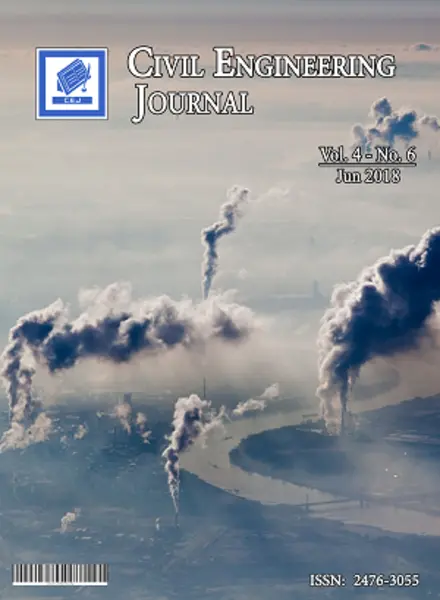-
the influence of intertextuality on aesthetic principles in postmodernist painting and architecture
جزئیات بیشتر مقاله- تاریخ ارائه: 1400/08/01
- تاریخ انتشار در تی پی بین: 1400/08/01
- تعداد بازدید: 752
- تعداد پرسش و پاسخ ها: 0
- شماره تماس ژورنال: 982188779475ext.258
intertextuality reflects certain studies theories shaped in recent decades and has been widely used in artistic and literary studies as well as other studies in the field of humanities. intertextuality is not merely a theoretical notion in literary studies since its influence embraces the intellectual and cultural field as a whole. intertextuality not only challenges many traditional beliefs, but also addresses the fact that a culture is constantly seeking to prove its own originality and identity through suppressing plurality, diversity, altruism, and dissent shall never tolerate the inevitable consequences of this concept. on the other hand, as a cultural and historical term, postmodernism often invokes in one’s mind notions of hybridization, emulation, and combination of pre-established styles and trends. in the same way, contemporary art relies on certain visually distinguishable images of classical paintings. apparently, intertextuality serves to highlight the important notions of the fundamental relationship as well as the mutual bond and interdependence in today’s cultural existence. this article studies how intertextuality as a way of thinking has influenced the development of various painting and architectural styles. for this purpose, we first define intertextuality and investigate how and why it has come to encompass its present meanings and applications.
حوزه های تحت پوشش ژورنال
مقالات جدیدترین رویدادها
-
استفاده از تحلیل اهمیت-عملکرد در ارائه الگوی مدیریت خلاقیت سازمانی و ارائه راهکار جهت بهبود
-
بررسی تاثیر ارزش وجوه نقد مازاد بر ساختار سرمایه شرکت های پذیرفته شده در بورس اوراق بهادار تهران
-
بررسی تأثیر سطح افشای ریسک بر قرارداد بدهی شرکت های پذیرفته شده در بورس اوراق بهادار تهران
-
بررسی تأثیر رتبه بندی اعتباری مبتنی بر مدل امتیاز بازار نوظهور بر نقد شوندگی سهام با تأکید بر خصوصی سازی شرکت ها
-
تأثیر آمیخته بازاریابی پوشاک ایرانی بر تصویر ذهنی مشتری پوشاک ایرانی (هاکوپیان)
-
بررسی رابطه بین خشونت خانوادگی با کیفیت زندگی در زوجین متقاضی طلاق مراجعه کننده به مراکز مشاوره شهر شوشتر
-
بررسی شکل پذیری مغز
-
بررسی تعداد تکرارهای سه تایی ctg و تحلیل هاپلوتایپ در ژن dmpk در جمعیت سالم ایرانی
-
خطرات بهداشتی و آلایندگی آرسنیک در چشمه های آبگرم خرقان، قزوین
-
the effect of bridge piers distance on the optimum piles group in elevated expressways (case study: sadr elevated expressway)
مقالات جدیدترین ژورنال ها
-
مدیریت و بررسی افسردگی دانش آموزان دختر مقطع متوسطه دوم در دروان کرونا در شهرستان دزفول
-
مدیریت و بررسی خرد سیاسی در اندیشه ی فردوسی در ادب ایران
-
واکاوی و مدیریت توصیفی قلمدان(جاکلیدی)ضریح در موزه آستان قدس رضوی
-
بررسی تاثیر خلاقیت، دانش و انگیزه کارکنان بر پیشنهادات نوآورانه کارکنان ( مورد مطالعه: هتل های 3 و 4 ستاره استان کرمان)
-
بررسی تاثیر کیفیت سیستم های اطلاعاتی بر تصمیم گیری موفق در شرکتهای تولیدی استان اصفهان (مورد مطالعه: مدیران شرکتهای تولیدی استان اصفهان)
-
طراحی، ساخت و کنترل ربات پرنده چهار ملخه کوچک برای طی مسیر خاص با استفاده از روش پرواز کور
-
بررسی تاثیر حمایت اجتماعی بر قصد خرید مداوم با میانجی گری اعتماد به فروشندگان و اعتماد به برند (مورد مطالعه: مشتریان فروشگاه های افق کوروش شمال تهران)
-
حضور زنان در کمیته حسابرسی: حق الزحمه حسابرسی و نوع اظهار نظر حسابرس مستقل
-
بررسی رابطه بین ساختار مالکیت، ترکیب اعضای هیئت مدیره و سرعت گزارشگری مالی در شرکت های پذیرفته شده در بورس اوراق بهادار تهران
-
تاثیر محافظه کاری بر افشای کیفی در گزارشات تفسیری مدیریت


سوال خود را در مورد این مقاله مطرح نمایید :